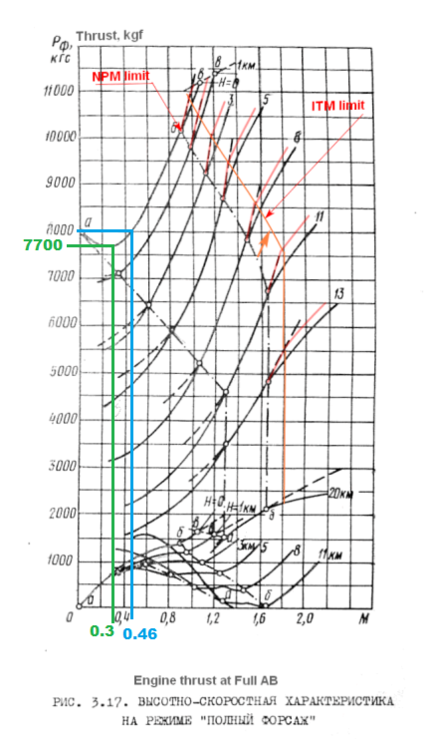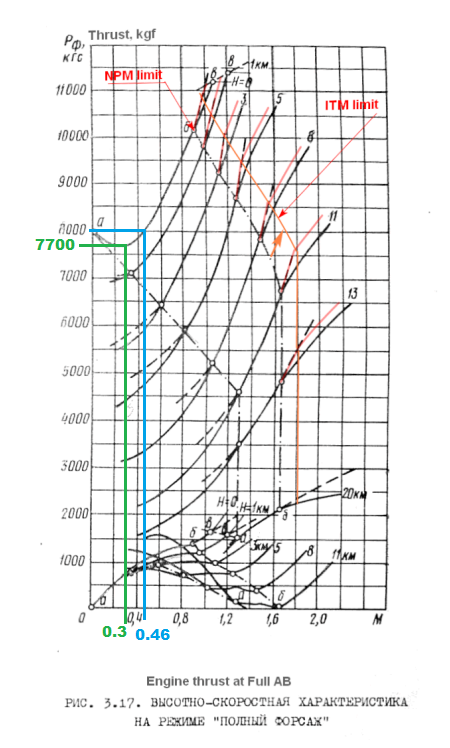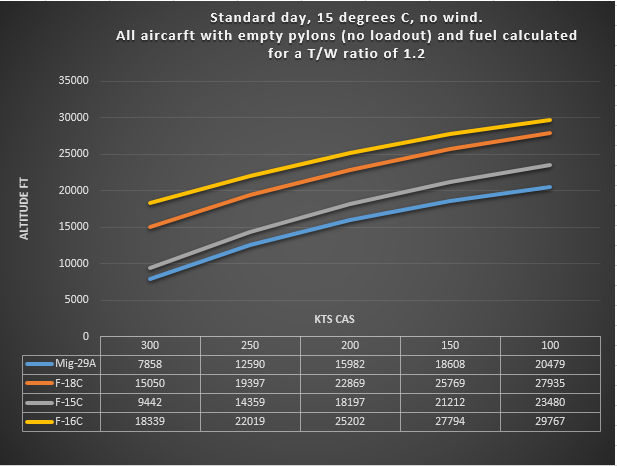

bkthunder
Members-
Posts
1786 -
Joined
-
Last visited
-
Days Won
2
Content Type
Profiles
Forums
Events
Everything posted by bkthunder
-
Looks great but 2 things annoy me: 1. The deck is so dark it's, at least on my 1080p 24" monitor, nearly impossible to line up visually (gamma set at 2.2). 2. from external view (F9) it's impossible to get close to the ship (by mousewheel). There is like an invisible bubble around it that makes it impossible to get too close. Now this is a very stinky and slimy practice initiated by ED when they introduced the SC: they removed the Alt-F9 view which was the LSO viewpoint, and on top they made it impossible to bring the camera close to the deck, because they want you to buy the SC to have some decent views of the deck. Effectively removing features that have been there for 15 years, to frustrate people into buying the SC. I was hoping HB would steer clear of this.
-
Oh God... what do you mean "a bit more sensitive to wind"?? Did they screw the FM again and made it dependent on wind? Wind has no aerodynamic effect on an aircraft while it's off the ground. There was a massive bug that was finally corrected, by which airspeed, AoA and engine thrust were affected by wind. I hope it hasn't been re-introduced again!
-

investigating Thrust to weight ratio: confused
bkthunder replied to bkthunder's topic in MiG-29 for DCS World
I started the thread because I think raw thrust of the MiG-29 is less than what it should be. We have done several tests and they all seem to show the thrust is not about 16000 kgf but around 12500-13000 kgf, as you can see in this and following posts: To make things more interesting, it seems also other airplanes are far below the supposed thrust range, but we don't have detailed data for installed thrust as we have for the MiG-29 so, it's hard to tell. What is confirmed is that the MiG-29 has the worst thrust and climb performance compared to F-18, F-16 and F-15, given a GW that should provide the same T/W ratio for all. The turn rate tests IMO are not very useful because, as someone pointed out again, if the drag is lower than it should be, then with less thrust it could be possible to have correct turn performance. -

investigating Thrust to weight ratio: confused
bkthunder replied to bkthunder's topic in MiG-29 for DCS World
I was using TAS -

investigating Thrust to weight ratio: confused
bkthunder replied to bkthunder's topic in MiG-29 for DCS World
yeah I have the free version.. well, you can check the track and get more precise timings I guess -

investigating Thrust to weight ratio: confused
bkthunder replied to bkthunder's topic in MiG-29 for DCS World
Guys this must be the most interesting thread I've been involved in, and this is thanks to your contributions! I carried out the test you suggested: Mig-29A 13000kg GW with 2x R27R and 2x R73 - 600km/h to 1100km/h in 13.5s DCS: 15s - 1100km/h to 1300km/h in 8.7s DCS: 10s I couldn't find a way to measure decimals of a second in TacView... Track and Tacview attached. MiG-29A acceleration test.trk Tacview-20211008-154129-DCS.zip.acmi -

investigating Thrust to weight ratio: confused
bkthunder replied to bkthunder's topic in MiG-29 for DCS World
Confirm the mass is 13770 Kg, this is straight form the mission editor loadout page (you can take the track file posted in the OP and check). Curious how you got acceleration of 9.223 m/s2, if I understand correctly, you measured measured over 2 seconds as opposed to 10 seconds in my test? @Ironhand didn't realize the tires were blown! Ok, anyway do we agree according to our calculations, with some error and variance, we are far from the 16000 Kgf of thrust the plane should have, according to the chart posted earlier? Are we missing something? -

investigating Thrust to weight ratio: confused
bkthunder replied to bkthunder's topic in MiG-29 for DCS World
I tested pretty much as you describe, waiting to be in full AB and brakes released, and waiting for the engines to be spooled down as much as possible (but it's hard 'cause the runway is not long enough). Either way, I have sampled speeds at different points and at different intervals, there are of course some small differences, but in general I can confirm the numbers I posted before. I attach here the track so you can check for yourself. P.S. I also tested with F-18 and F-16, and strangely enough, while they both have a higher thrust than the MiG-29, they also fall way short of their declared static thrust by several thousand lbs! Tacview-20211006-104628-DCS.zip.acmi Tacview-20211006-112533-DCS.zip.acmi Tacview-20211006-123714-DCS-Climb TW ratio test.zip.acmi -

investigating Thrust to weight ratio: confused
bkthunder replied to bkthunder's topic in MiG-29 for DCS World
So I *think* I tested this correctly. Mig-29A total Mass: 13770Kg Flaps up in all tests to reduce drag. first I tested the ground friction as you suggested. Initial speed: 35 m/s final speed after 10 seconds: 31.3 m/s = -0.38 m/s2 deceleration 13770 x -0.38 = -533.58 kgf Acceleration test - measurement started when in full AB and no brakes. Initial speed: 39.8 m/s final speed after 10 seconds: 125.2 m/s = 8.54 m/s2 acceleration 13770 x 8.54 = 11991.57 kgf + 533.58 = 12525.15 kgf So: - 12500 kgf vs 16600 kgf (static thrust) - 12500 kgf vs 16000 kgf according to the chart below Conclusion: The MiG-26A lacks 4000 kgf of thrust. Can someone confirm my calculations are correct? Thanks -

investigating Thrust to weight ratio: confused
bkthunder replied to bkthunder's topic in MiG-29 for DCS World
At least from my side, I am trying to eliminate drag from the variables as much as possible, hence why I tested at low speed. Mach 0.8 doesn't allow you to clearly test for thrust: - you are adding speed (=drag) so differences between airframes and their drag have a stronger influence on the outcome - the initial speed makes it so that the first part of the climb (up to ~6k feet where engine thrust is unaffected by air density) happens due to stored energy rather than pure thrust out the back. I maintained a constant 3g pull in all tests for all airplanes. If you check the track/tacview you can see that in all cases I maintain 3 g up to about 4000ft, then it immediately drops down to 0.5-0.9g during the climb. I.E. I was not pulling more g or for longer in the MiG-29 than in the F-18, F-16 etc. -

investigating Thrust to weight ratio: confused
bkthunder replied to bkthunder's topic in MiG-29 for DCS World
Nice work Ironhand! Did you test at M 0.8 just to add a data point? Just to clarify, the point I'm making is that the MiG-29 is the only aircraft - among those tested - that can't maintain speed in a climb (from sea level to 6k feet) given the same T/W ratio (all aircraft use static thrust to calculate), and given the same starting speed, 3g pull and 80 degrees climb. In your spreadsheet you can see that up to 2000m (about 6500ft) the T/W ratio is >1 and I maintain that at the low speed I tested at, differences in drag between the different aircraft are negligible, and if anything the MiG-29 should be less draggy than the F-18. So, unless the F-18, F-16 and F-15 have a much better T/W ratio at low speed, I don't see why they all have better climb performance than the MiG-29. I guess now we should do the same test at M 0.8 with the other airplanes, or @Yo-Yo could shine some light on the matter (maybe U.S. engines are better at M 0.5?) -

investigating Thrust to weight ratio: confused
bkthunder replied to bkthunder's topic in MiG-29 for DCS World
You have run the test with 25% fuel, giving you a GW of 26264 lb and a T/W ratio of 1.3. I tested with a T/W ratio of 1.2 (80% fuel). But again this shows my point even more. In your test with 25% fuel the MiG-29 still has far worse performance than any of the other planes I tested with a T/W ratio of 1.2. You gained 3-4 knots vertically which stopped at around 3500ft. This is how it lines up: -

investigating Thrust to weight ratio: confused
bkthunder replied to bkthunder's topic in MiG-29 for DCS World
All other aircraft tested were accelerating up to about 6000ft, then the thrust decreases. The MiG-29A drops speed immediately. -

investigating Thrust to weight ratio: confused
bkthunder replied to bkthunder's topic in MiG-29 for DCS World
So, if I understand correctly: I have tested at sea level, so I take the H=0 line - correct? If yes: In the first test, I start to pull up at 300 KCAS / 0.46M = 8000 Kgf x2 = 16000 Kg of thrust = 35273lb vs GW of 30358lb set in the mission. T/W ratio of 1.16 In the second test, I started at 200 KCAS / 0.3M = 7700 Kgf x2 = 15400 Kg of thrust. 33951 lb vs GW of 30358 set in the mission. T/W ratio of 1.12 In both test I am well above a T/W ratio of 1, so especially in the second low-speed test the aircraft should maintain speed for a bit while climbing. It doesn't. -

investigating Thrust to weight ratio: confused
bkthunder replied to bkthunder's topic in MiG-29 for DCS World
Yet the point is really quite simple, at least in my tests: All aircraft were set for a 1.2 T/W ratio. That means they should all maintain airspeed if not slightly accelerate when in a vertical climb. Drag is definitely part of the equation, but not at the very low speed at which I tested and certainly cannot justify the MiG-29 bleeding speed rapidly in all scenarios, while all other airplanes gain airspeed in the same conditions, with same T/W ratio. So IMO it might well be the MiG-29 has a lower thrust than it should have, but also lower drag and higher lift than it should have, which can explain why the top speed and horizontal acceleration are ok, while in a climb it performs far below the rest. -
It was easy to misinterpret what he wrote, but what he meant is that in flight you don't need to touch the rudder because at slow speed the FLCS will move it for you to give you the roll response that you want at slow speed / high AoA. In a xwind landing F-16s don't touch the rudder and touch down crabbed into the wind, it's a very squirrelly aircraft to land. You can carefully use the rudder on rollout.
-
Just gave it a few tries. Glad to know they are working on it, but it's staying on the shelf until max/min G and g-onset rates are at least in the ballpark of what they should be.
- 136 replies
-
- 1
-

-
- bfm
- performance
-
(and 3 more)
Tagged with:
-

investigating Thrust to weight ratio: confused
bkthunder replied to bkthunder's topic in MiG-29 for DCS World
https://we.tl/t-nLhQ55Bwst I PMd you as well -

investigating Thrust to weight ratio: confused
bkthunder replied to bkthunder's topic in MiG-29 for DCS World
Exactly, and that’s what I tried to do with test 1 and test 2. Especially in test 2 I put the aircraft at low speed and almost vertical. Low speed means drag is less relevant (drag increases with square of speed) and by being nearly vertical in both tests I tried to rule out lift as much as possible. Either way, the difference between the Mig-29 and F-18 is massive, and this doesn’t go well with the widespread knowledge/legend that the Mig-29 has a massive advantage in thrust. The F-15 also looks weak compared to the F-18 and F-16. -

investigating Thrust to weight ratio: confused
bkthunder replied to bkthunder's topic in MiG-29 for DCS World
Please see the first post, I updated it -
I flew the MiG-29 quite a bit lately and enjoying the FM overall. However, while I read and hear everyone saying it has the best T/W ratio in game, I have the opposite experience. I test flew it, flying close to the ground at low speed (~150kts) and then going into a full A/B "vertical" climb, the aircraft doesn't accelerate. At low altitude where engine thrust is maxed, if T/W ratio is >1 it should indeed gain speed as it climbs, instead the MiG-29A bleeds speed. I have run the same test on F-15 and F-18, and they both slowly gain speed up to about 5000ft, where engine thrust seems to decrease to the point of being less than the weight of the aircraft, and airspeed starts to decrease. In all cases I am talking about clean aircraft with 50% fuel. Then I read the DCS MiG-29 manual and I find this: So, the DCS manual says the aircraft is 10900 kg empty, and the maximum thrust is 8300 Kg. According to the manual the DCS MiG-29 has a empty T/W ratio of 0.76. I think that's for a single engine, so 16600Kg in total. a T/W ratio of 1.52 I have looked around and pretty much all sources I could find, from wikipedia (I know...) to "From Farnborough to Kubinka - An American MiG-29 Experience Benjamin S. Lambeth" state the A/B static thrust to be in the range of 18200 lbs or about 8200 Kg. So in line with the manual Why then in game the performance seems underwhelming? Update 9/15/2021 I performed several tests and recorded the data with Tacview. Test 1: At sea level and in Full A/B, initiate a constant 3g pull at 300Kts(CAS) up to an attitude of 80 degrees. Record altitude at 300, 250, 200, 250 and 100kts intervals. Each test performed 3 times for each aircraft, the numbers you see are the average values of the 3 tests. It appears that the MiG-29A is the worst performer while the F-16 is the best, with the F-18 a close second. Test 2: At sea level and in full A/B, initiate a high alpha pull up at 200kts, up to an attitude of 70 degrees. With a T/W ratio of 1.2 for each aircraft, I expect each airplane to be able to accelerate vertically at low altitude. This is proven correct for the F-18, F-16 and F-15: they all gain a few knots from 200 up to 213-215 while climbing at 70 degrees pitch. The speed starts to decay after passing 6000ft for all aircraft. For the MiG-29A it's a different story: given the same conditions above, the speed drops immediately as the attitude of 70 degrees is set. The aircraft is never able to gain nor to maintain speed in a 70 degree climb at any altitude. Each test performed twice for each aircraft. I attach here the tacview file. The trk exceeds the allowable file size, can you suggest a sharing service that doesn't require to sign up? Tacview-20210915-175010-DCS.zip.acmi
-
You did bring an improvement Elmo, that is true! All the best!
-
Just to add to this, it seems like the SHIT and CTRL keys get stuck. For example if I pressed shift-tab to open the chat, type the message and close it, and then try any command hat requires the crtl key, it doesn't work. If I try to eject (ctrl-e) it won't work. I have to press ctrl and shift to "unstick" the keys and then it works again. Same thing goes for the Shift key.
-
Looks like the Shift key gets stuck when trying to open the chat window with LSHIFT-Tab: it opens up the first time, then the second time I have to push Ctrl-tab to "unpush" the LSHIFT, and then press LSHIFT-Tab again. Also, after pressing ctrl-tab, I can't eject and the sim doesn't recognize the ctrl key until I press SHIFT one more time. I know others are experiencing this and it is a bug. very very annoying, plus when the chat window is open the view is locked in place and the mouse cursor doesn't work,
-

winter update still on track? (yak-52 candlelit vigil)
bkthunder replied to twistking's topic in DCS: Yak-52
it's abandoned and this is proven by facts. Nothing has been added nor fixed since ever.





